Seven of the best looking, but not very well-known, shooting brakes ever made.
The shooting brake, or break de chasse, has long been the holy grail of petrolhead fantasies.
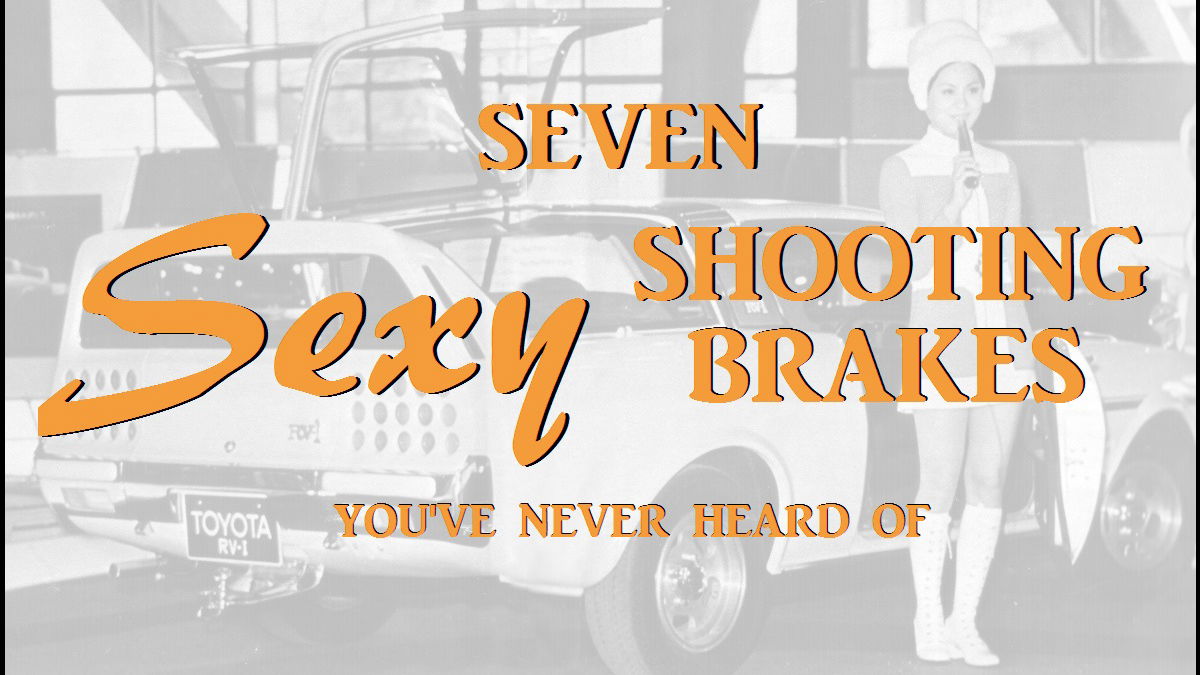
The shooting brake, or break de chasse, has long been the holy grail of petrolhead fantasies. Masterpieces like the Ferrari 250 Breadvan, the Volvo P1800ES, and the Radford Aston Martin DB5 are classic examples of the idea of the shooting brake; a sports coupe given the longer, more practical body of an estate car. More recently, manufacturers have noticed the appeal of the shooting brake, and have come through, producing cars with the likes of the Ferrari FF, and the BMW M-Coupe.
Most shooting brake concepts made by big-name manufacturers never make it to the production stage, which leaves the market open to smaller coachbuilding companies, as well as amateur enthusiasts. However, due to limited production, many of them are quite obscure.
Thankfully, your trusty tank rallyist has been doing some research, and I’ve found seven unique shooting brakes that, I hope, will tickle your fancy. These include one-offs and limited production-run vehicles made by the vanilla manufacturers, and rare examples made by coachbuilders and private individuals. Hope you all enjoy!
Artz Porsche 924 Turbo- Gunter Artz; Artz (Germany)
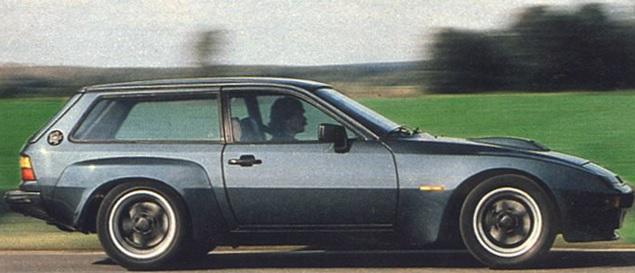
Günter Artz was one of the most brilliant, if slightly mad, coachbuilders of his time. Some of his best work included his Audi Quattro limousine, Volkswagen Scirocco pickup, and Lotus Calibra (yeah, that’s the body of an Opel Calibra on a Lotus chassis- told you he was mad). One of his lesser-known creations, however, was this; a brilliant shooting brake version of the Porsche 924 Turbo.
The Porsche 924 Turbo, produced from 1979 to 1983, it was powered by a 2.0 litre inline-four, which was boosted to 10 psi by a single BorgWarner K-26 turbocharger. It produced 170 horsepower (130 kilowatts) at the wheels, and was a significant upgrade from the 125 horsepower (93 kilowatts) of the naturally-aspirated version.
The 924 Kombi, as it was called, was built between 1980 and 1981, off of Type 931 924 Turbos. Its looks were reminiscent of that of the 924 Carrera GT, and it’s likely that many of the body panels and the wheels came from 937 Carrera GTs. It’s likely that the back end came from a Volkswagen Golf, as many of Artz’s builds involved the Volkswagen Golf in some manner. Only twenty 924 Kombis were ever produced, all of them in blue metallic paint.
Jaguar XK150 ‘Foxbat’- Geoffrey Stevens (UK)
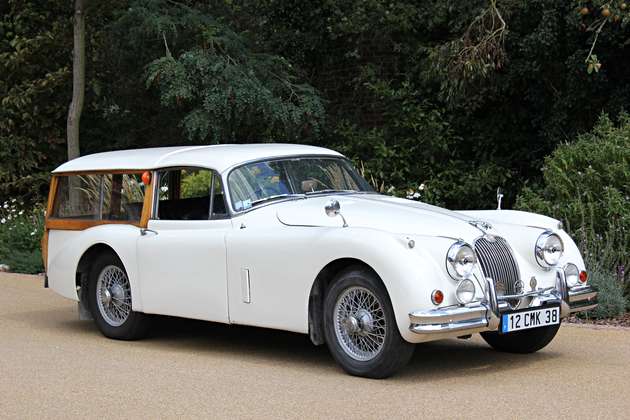
I just want to put this out there, that I absolutely love old Jaguars. They are some of my favourite cars in the world, so you can imagine my excitement when I found this unique shooting brake version of the XK150. Manufactured between 1957 and 1961, the XK150 was one of the fastest road cars of its day, with naught to sixty coming in 7.8 seconds. It was produced as fixed-head and drophead coupes, and therefore, only had vestigial, and very cramped, rear seats.
The bigger problem for its creator, however, was that it lacked space for his two Labrador Retrievers. The ‘Foxbat’ eliminated that problem. Built in the Seventies by a man from Suffolk called Geoffrey Stevens, the ‘Foxbat’ features the rear end from a Morris Minor Traveller. Both cars were initially plagued with rust, and were bound for the scrapyard, but painstaking restoration by Mr. Stevens saved both automobiles, and created this bizarre combination. Its looks are loved by some and hated by others, but on the whole, it’s very clean for an amateur coachbuilding job.
The ‘Foxbat’ was powered by a 3.4 litre straight-six, which produced 190 horsepower, or about 142 kilowatts. Only two examples were ever created, and only one is known to survive to the present. Previously registered in France, it was auctioned off by Bonhams in September of 2011.
Fiat 130 Maremma- Unknown designer; Pininfarina (Italy)
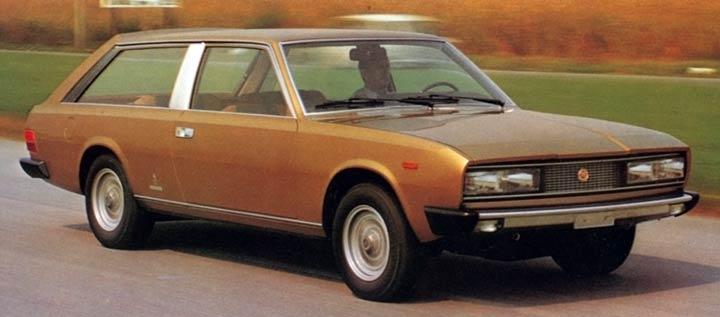
Over the years, Pininfarina has produced some truly spectacular cars. Its partnership with Ferrari is the stuff of legend; some of the most beautiful cars in the world have come as a part of it. To a lesser extent, Pininfarina worked with Fiat, and in 1971, under the direction of Paolo Martin, they released the Fiat 130 Coupé. The 130 Coupé was an instant success, and won Pininfarina the Style Auto Award; bringing Pininfarina back into the game after a period of serious problems.
In 1974, Martin’s design was further adapted by an unnamed Pininfarina designer, and it was proposed to Fiat that a shooting brake be built. Though the proposal was ultimately rejected, three prototypes were built. Featuring the 130 Type B 3.2 litre V6, the Fiat 130 Maremma produced around 165 horsepower, or around 123 kilowatts. The Maremmas had a beautiful interior, which featured a combination of both Alcantara and leather, giving the Fiat a surprising luxurious feel.
One of the three 130 Maremmas was used by Fiat’s boss ati the time, Gianni Agnelli. Surprisingly, all three examples survive to the present day; all of them kept in museum collections.
Jensen GT- Hugo Poole(?); Jensen Motors (UK)
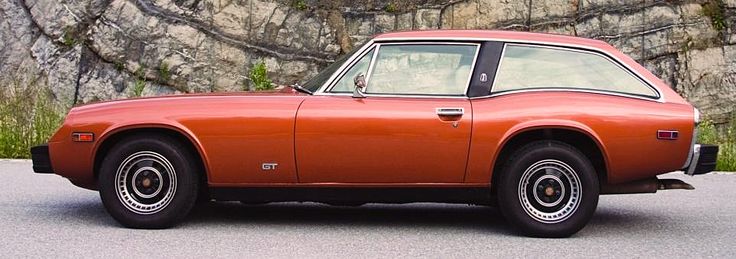
When most of you hear Jensen, you’ll probably be thinking of the Interceptor- and rightfully so; it is a beautiful and classic car. However, there is one car that is commonly overlooked, and that’s quite a shame… it’s one hell of a good looker. The Jensen GT is a shooting brake version of the Jensen-Healey, from which it gets its good looks. Introduced in 1975, it would be the last car that Jensen ever produced, with factories closing one year later.
Aside from a slight lengthening, the addition of two more seats, and a new roofline, it is pretty much completely identical to the Jensen-Healey. It used the same engine; the 2.0 litre Lotus 907 I4, which produced a modest 144 horsepower. Due to the increase in weight, the GT was slightly slower than its parent car, with naught to sixty coming in around 8.7 seconds. This, coupled with the wonderful Getrag 235 5-speed manual, produced a shooting brake that was very fun to drive.
Ultimately, however, production was cut short when the factories closed in 1976, with only 511 units being produced. They remain relatively rare, and the number continues to decline. Jensen has announced a revival of the GT name for sometime in 2016, with design heavily based on the Interceptor.
Toyota RV-1- Unknown designer (possibly Jiro Kawano); Toyota (Japan)
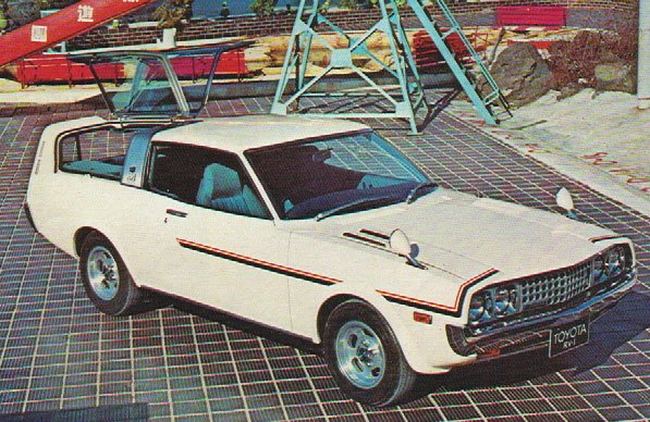
The RV-1 was… interesting. A concept that never saw production, it was an effort by Toyota to dip into the Recreational Vehicle market. As much as Toyota would have liked for this concept, which was debuted at the 1971 Tokyo Motor Show, to enter production, the market was seen to be too small and risky. An unfortunate outcome, for what could have been a really interesting, and fun, car.
The design was based off of the A20 Celica, and though no viable information on the engine could be found, it is likely that it was powered by the 1.6 litre 2T-G four cylinder, which had an output of 125 horsepower, or 93 kilowatts. Performance figures are unknown, but they were undoubtedly affected by the additional weight of the back end. The main difference between the RV-1 and the Celica which it was based off of, was the addition of the sloping roof line, and the gull-winged glass canopy in the rear. The car was meant to be coupled with a fibreglass trailer concept, called the Marinetta.
However, the entire project was binned, and the car never saw production, which was quite a shame. Many of the design themes from the RV-1 were carried over into a slightly later concept, the RV-2, which included a tent that folded out from the clamshell roof.
Allard P2 Safari- Sydney Allard; Allard (UK)
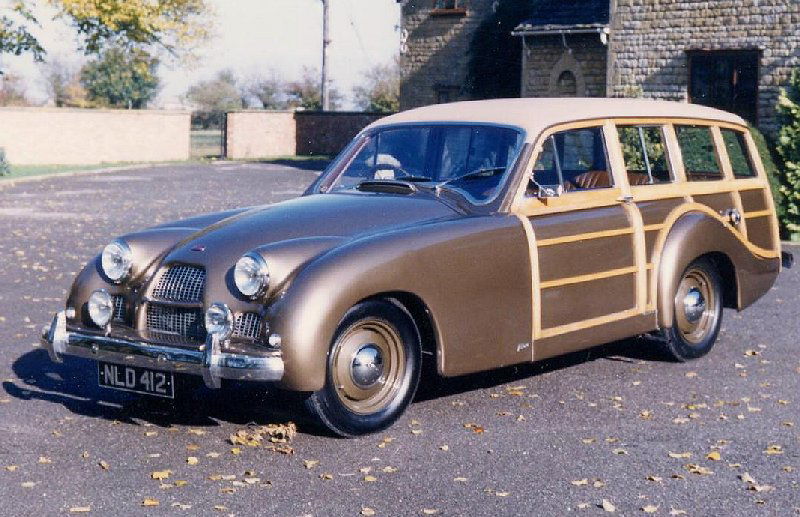
Once again, a limited production car from the United Kingdom makes the list, and by limited production, I mean very limited. Allard was never known for producing cars in great numbers, and the P2 is no exception, with only ten examples being built from 1952 to 1954. In fact, out of the ten originals, only four survive to this day.
The P2 could be ordered with a wide range of engines, built by Ford, Mercury, and Cadillac, the latter being a 5.4 litre V8. The latter produced 160 horsepower, or 119 kilowatts, but made up for the lack of horsepower with almost 270 foot pounds of torque. These engines are also very easily modified, making the Safari a prime candidate for an amazing sleeper.
The suspension was pioneered in the earlier J2, and though the Safari was significantly heavier, the tight handling of the J2 was passed on to the P2. It was also a thing of beauty; its body lines are smooth and unbroken, and the interior would have made a Rolls-Royce scream in envy. It’s a shame so few of these remain; the world needs more cars like these.
Triumph TR6- Unknown Craftsman (Germany)
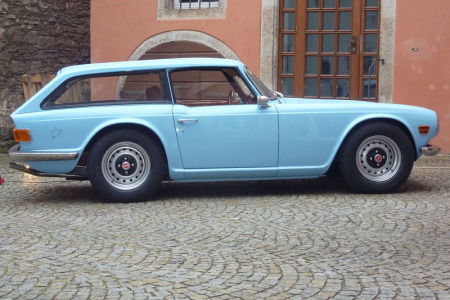
Sacrilage? Maybe. Beautiful? Certainly. No matter what your beliefs are on this car, you have to admit that it is fantastically done. The TR6 was manufactured from 1968 to 1976, and was the most popular Triumph of all time by a decent margin. It had good looks, and was small and light; perfect for twisting backroads, or a weekend at the racetrack.
The TR6 wasn’t without backbone wither. It was powered by a 2.5 litre straight six, paired with a 4-speed synchromesh manual, with an optional overdrive. Depending on where it was sold, the TR6 produced between 104 and 150 horsepower, or between 78 to 110 kilowatts. 0-60 came in 8.2 seconds, and it topped out at 120 miles per hour, or 190 kilometres per hour.
This particular example is extremely unique. Though concrete information was unfortunately unavailable, it appears to feature the optional hardtop (available from Triumph) with a custom-fabricated roof inbetween that and the windscreen. The original vehicle was in decrepit shape, but a full restoration was done. The whole conversion was very cleanly done, and there is little evidence of modification.
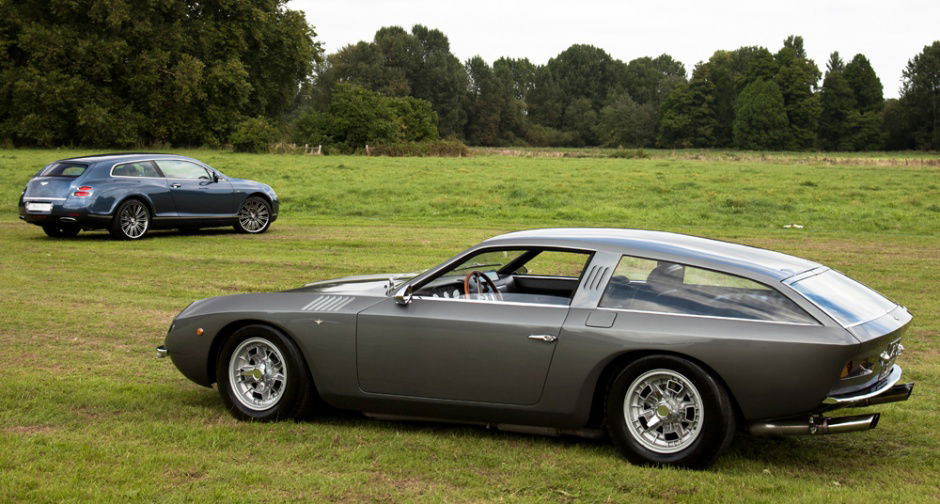
Did I miss anything? What’s your favourite obscure shooting brake? Hope you all enjoyed; this article has been a long time coming. Cheers!
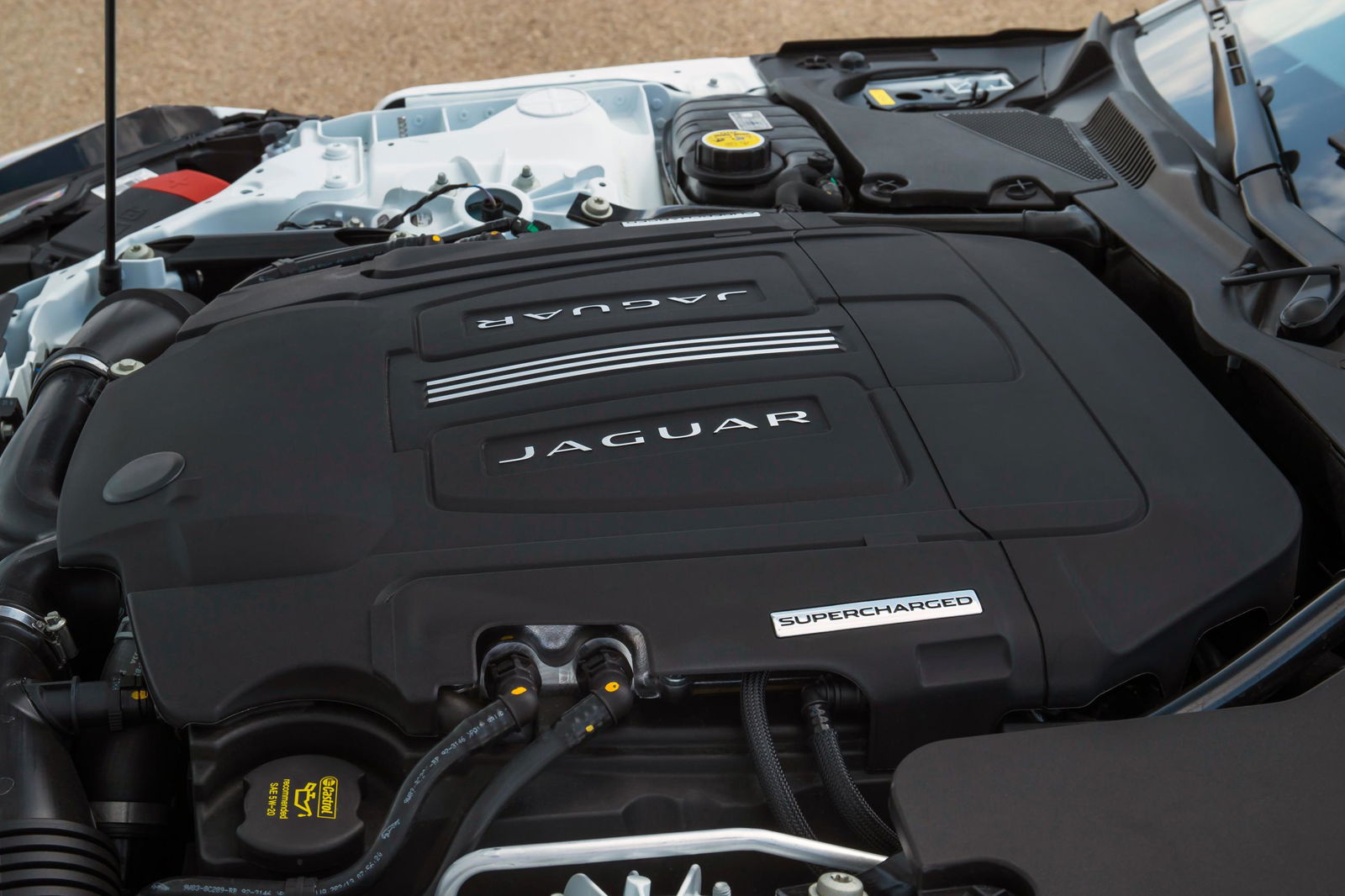
Comments
Volvo P1800 ES?
I think the Audi quattro shooting brake concept was a nice one that not many people know about, too. Another Artz one, like the Porsche 924. They did a good job on both!
I think the Audi quattro shooting brake concept was a nice one that not many people know about, too. Another Artz one, like the Porsche 924. They did a good job on both!
You left out the daytona shooting brake??? Well I guess it’s pretty well known. Good read btw.
That Triumph is beautiful! I don’t really like them that much but dayum!
Pagination